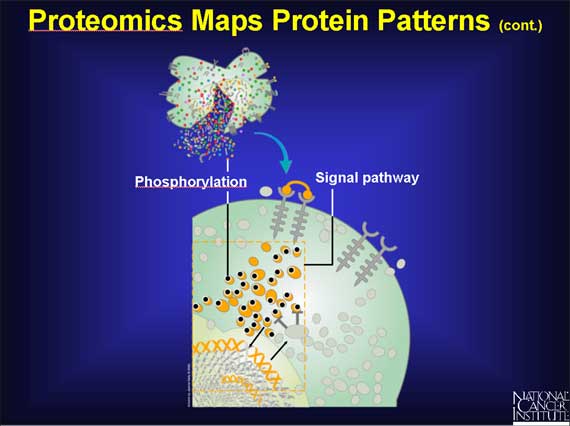|
For many proteins in the cell, the addition of a small molecule called phosphate acts as a switch that activates the protein. This process is called phosphorylation. To preserve a cell's phosphorylation state and capture an accurate pattern of proteins interacting in a cancer cell, proteomics researchers must handle the biopsy or blood specimens carefully. They do this by seeing that samples are quickly treated with enzymes to block the removal of phosphates from proteins. This enables researchers to identify a protein pattern almost identical to what was in the cell at the time of collection.

< Previous | Index | Next Slide > |